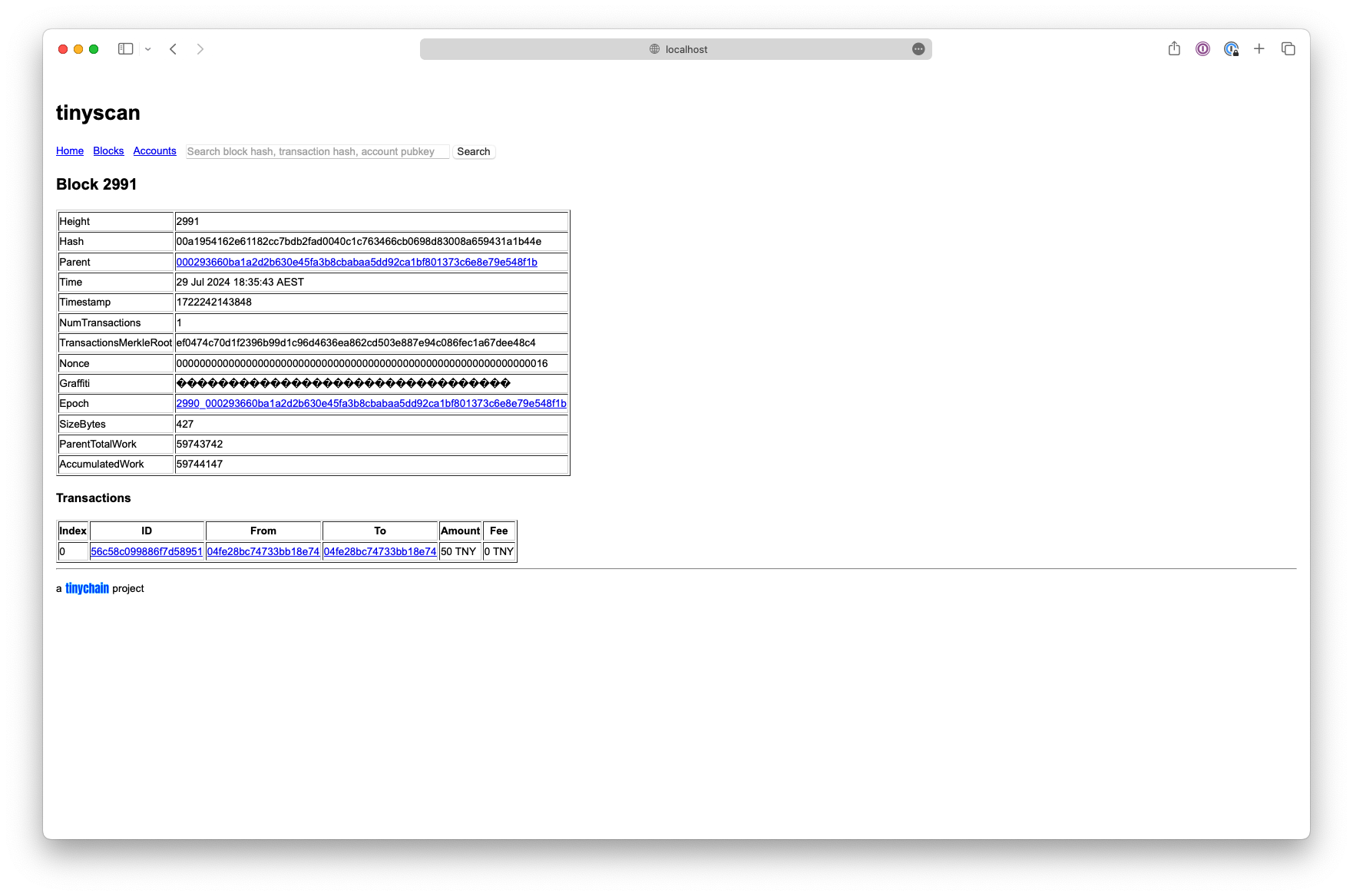Website | API documentation | Concepts
tinychain is the tiniest blockchain implementation in the world.
We're building a cleanroom implementation of a Nakamoto-style blockchain. Think of it like tinygrad but for bitcoin.
The core goals of this project are to:
- Build a blockchain in under 10K lines of code, from scratch.
- Launch a blockchain network (and prove this isn't just a library or light client; it's the real deal!).
- Distill a blockchain network down to its core primitives at all layers of the stack.
- Create an educational resource for studying blockchains, the actual engineering of how one works - not just the conceptual idea of proof-of-work, but the engineering aspects - like synchronisation, DAG's, and other algorithms.
- Build a foundation to innovate and experiment more quickly with new tech, like DAG-based sequencing algorithms, Bitcoin MEV and proposer-builder separation, instant sync using zero-knowledge proofs, and more.
Taking inspiration from projects like SQLite, TempleOS, Cosmos/Tendermint, Linux, KHTML, tinygrad, nanogpt. These are all open-source technologies, embodying extremely minimal implementations of software (tinygrad, nanogpt, tinyRAM), projects launched as hobbies to compete with professional endeavors (Linux), code built out of open-source love for building something really high quality (KHTML, which later spawned WebKit), engines that distilled a complex thing into its core ideas (Tendermint/Cosmos), highly portable and reliable tools (SQLite)...and then just free agents building entirely new branches of the tech tree, like TempleOS.
Specification:
- Nakamoto consensus.
- Hashcash.
- Dynamic difficulty retargeting (epochs).
- Proof-of-work consensus - longest/heaviest chain rule.
- Merklized transaction tree for light client availability.
- State sync - greedy iterative search for blocks, light client sync, parallelised block header download from multiple peers.
- Bitcoin-style tokenomics - coinbase, transaction fees.
- State machine - with an account-based model.
- ECDSA (curve P256) wallets for signing transactions. Signature malleability fixes.
- Core data structures: RawBlock, RawTx, Block, Tx, Epoch, BlockDAG, current tip, Miner, NetPeer, Node
- Networking: HTTP peer interface, messages/methods include [bootstrap/gossip peers, gossip blocks, gossip txs].
- Miner: mine new blocks on the tip, measure hashrate.
- CLI: start a node, connect to the network, mine blocks.
Dependencies:
tinychain is in-development. Currently we can run a node, mine blocks, ingest them into a DAG, create and sign transactions, run a state machine, build the UXTO set from processing transactions, connect to peers and gossip.
In progress: state synchronisation, user wallet API's.
Requirements: Go 1.2.3+.
make && cd build/ && ./tinychain node --port 8000 --db testnet.db -mine# Terminal 1:
./e2e/node1.sh
# Terminal 2:
./e2e/node2.shtinychain comes with a built-in block explorer (like Etherscan or Blockchain.info), which you can use to view blocks, transactions, and accounts. It displays all internal information of blocks (including difficulty epoch, transactions merkle root, accumulated work, etc.) that you can use to debug and introspect your blockchain network.
cd cli/
tinychain explorer --db ./node1.db
# open localhost:9000